
Branching Path: Bryan Vitale's Top Ten Games of 2017
It goes without saying that 2017 was something of a momentous year for video games. Personally, the sheer number and quality of great video games released in the last twelve months managed to help reignite my love for the medium after finding myself playing less and less in the last few years as I’ve gotten older with more responsibilities outside of the gaming sphere. It’s my first full year contributing to RPG Site, and I’ve been so lucky to work with so many talented and passionate people and even got a chance to help cover my first E3 event. I don’t know what the future holds for my time here, but I figured that this year I might as well cap off the occasion by reflecting on some of the amazing titles that came out in 2017.
Most of the titles in my list fall at last partially underneath the wide and nebulous umbrella that comprises the often-contested RPG label. Before going straight into the list proper, I know that there were several additional titles that I am near certain would fall onto this list if I simply had the capability of playing everything. Persona 5 is a title that I can tell oozes with style and personality that I hope I can find time to play through its lengthy run-time in 2018. Horizon Zero Dawn is a gorgeous game that I can’t wait to help christen a 4K HDR display one day. NieR: Automata seems to incorporate everything special about the video game medium into the very core of its experience and it’s at the very top of the list for titles to get into early next year. Outside of RPGs, Super Mario Odyssey seems to be the non-linear style Mario title I’ve been waiting for since Sunshine and is another title I hope to find my way to soon.
Looking forward and speaking more broadly about the house of Mario, the Nintendo Switch in general is poised to be the landing spot of all sorts of varied and interesting titles in 2018 and beyond that have me very excited for the future, including a new entry in the Fire Emblem series as well as a mainline Pokémon title that might finally bring the classic Pokémon experience to our TV sets. Metroid Prime 4, Shin Megami Tensei V, and Project Octopath Traveler are just a small number of additional upcoming titles that have me excited to see what the future holds for Nintendo’s unique console. It’s crazy what a difference a year make.
But enough about the future and back to the present; my top ten video games of 2017:
10. Tales of Berseria

I’m somewhat of a lapsed Tales of fan. Without going into needless detail, I found myself less willing to set aside time to play though the annual entries in the series since about the time of Tales of Graces. Bland presentation and mechanics, uninteresting characters, and dubious storytelling were just some of the issues among which I found myself putting games such and Xillia and Zestiria on the back burner indefinitely. However, the premise of Berseria established in its opening chapter was enough to get me interested in trying the newest entry out.
While the game doesn’t reinvent the series and carries many of the same weaknesses of its recent predecessors such as bland dungeon design and an over-reliance on using an absurd number of combat encounters to bloat out the last third of the game, it is still a marked improvement over what I’ve played of games such as Graces and Zestiria. The combat introduces enough of a series of jargon-laden mechanics such as Break Souls and Soul Gauge to keep the combat varied as you progress through the games many (many) encounters.
Where the game really steps up from previous entries is in the strength of its characters and, more importantly, the circumstances that surround their situation. It’s one thing to have a cast of interesting, multifaceted characters that aren’t just boiled down to their obvious defining characteristics (which the game does manage to do for most of its cast), but it’s more impressive how the game manages to write the cast’s unsteady alliance.
At the outset, Berseria is a tale of uneasy cooperation headed by Velvet’s interminable desire for absolute revenge, rather than the more saccharine and comparatively boring commonality of a cast of unassuming do-gooders swept up into a hero’s journey. It’s enough to make Tales of Berseria one of the more interesting games of the whole series, even if it doesn’t really stand toe to toe with the truly great games released this year.
9. Torment: Tides of Numenera
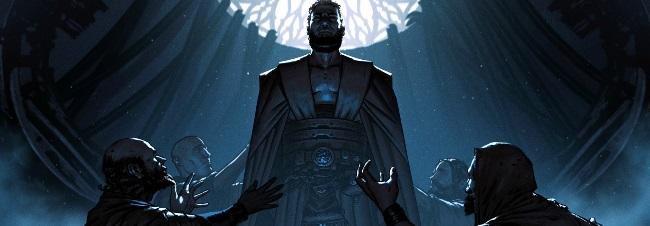
As someone who has still never played Planescape: Torment, perhaps my excitement for this title was a bit unfounded. Even so, the short synopsis of the story introducing the ideas of The Changing God and The Last Castoff set in a world literally billions of year in our future was enough to get me excited for a game that seemed to be trying something a little bit less traditional than your standard RPG trappings of western medieval fantasy or futuristic dystopia. And on those fronts, Numenera succeeded. The game is fantastically bizarre with people able to alter reality by adjusting memories, or confronting ghosts in the player’s mind after you die in-game. The concepts and theme are solid. It’s unfortunate that the nuts and bolts of the game let these ideas down.
Tides of Numenera’s presentation simply is not up to par compared to similar titles like Pillars of Eternity or recent Divinity titles. Not only are the vast, vast majority of dialogue interactions not voiced, but most of them don’t even have specific character artwork to accompany the many, many people that you’ll encounter in the game. This makes a lot of the game a great exercise in flexing your mind’s eye (and ear) for trying to come up with anything to keep the various townsfolk and important characters apart from each other; all you’ll have to go on is a name an a (usually generic) looking basic model. 95% of everything is just text.
In addition to this, many of the combat encounters, which are turn-based, are bogged down by the sheer number of enemies which all must act once per round. Having to act for 4 party members in between the movements of a dozen plus drones is as much a trial of tedium as it is a battle to overcome.
This list of issues stated, I still think Numenera comes packaged with some of the most unique ideas in the genre and some post-launch patches adjust the combat nitpicks should do a lot to alleviate those issues, allowing some of the cleverness underneath to shine through more strongly.
8. Mass Effect Andromeda
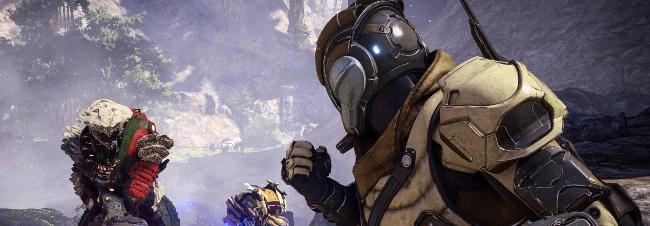
A year ago I think many of us would have been completely baffled to see the extent to which Mass Effect’s 2017 entry is absolutely absent from pretty much any end-year lists and awards. The various troubles with Andromeda are well documented, so reiterating them here wouldn’t do a whole heck of a lot. However, I was lucky enough to play Andromeda after about two or three month’s worth of patches, so my playthrough was devoid of silly animation errors or early-adoption jank. Even with these things ironed out, Andromeda is an uneven game, but still one that I found a lot of enjoyment in.
Andromeda at its core was to expand the world of Mass Effect beyond what we saw in the original trilogy of titles, and to that end, I think it mostly succeeded. Sure, both the Kett and the Remnant are a bit uninspired, but the Angara have some legitimately interesting ideas, including the emphasis on familiar units and how that plays into their politics. Several of the worlds, especially Havarl and the Angara homeworld, were more creatively designed and genuinely gorgeous than I thought a lot of people gave the game credit for.
While the gameplay of Andromeda suffers from a lot of the same weaknesses as Bioware’s Dragon Age: Inquisition did such as bland quest design and zones too big to be fun to play through, I still felt that the game was distinctly “Mass Effect”, perhaps captured most strongly in the multi-staged quest about setting up a movie night. Cynically one could say that the design parroted that of Mass Effect 3’s Citadel too strongly, but I still felt that it worked.
I fully admit that without the nostalgia of revisiting the themes and races (and a few characters) of the original games, Andromeda might not make this list at all. It’s not certain at all if we will ever get to revisit Mass Effect, and I think that if this is truly the end, we all wished this star could have burned out a little brighter.
7. The Legend of Heroes: Trails of Cold Steel
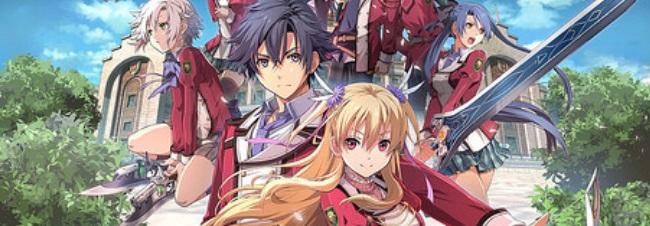
While I’m a couple years late to this title in particular, it was released this year on Steam so I’m considering that as reason enough to include it in this list. Bolstered by the strength of an impressively good port (I can’t imagine having played this game without Turbo Mode, for instance), Cold Steel is kinda a hard game to judge, and a lot of the discussion in this section will complement what I have to say about Trails in the Sky the 3rd later in the list.
What I mean by that is that judging Cold Steel as a full and complete game on its own would end up being not quite as fair to the title as I could be. At the same time, I don’t feel quite right handicapping it with a free pass on some aspects just because its part of a larger directly-connected series of games. As a whole, Cold Steel is a slow burn both story and gameplay-wise as the game builds to its conclusion.
Part of me feels like that is a strike against it, but I also know that it’s a necessary thing for building onto later games. I felt the same way when I originally played through Trails in the Sky FC and SC; that is, I didn’t really enjoy those games a whole lot, but they contributed to my enjoyment of Trails in the Sky the 3rd immensely.
So judging Cold Steel as a title intended to introduce us to a new continent and cast of characters, it succeeds by giving enough time to each so that only very few of them come across as flat one-note archetypes, with the exception of Rean, surprisingly enough. That weakness and the unnecessarily circular story progression persist, even if other perceived shortcomings are discounted. Despite throwing several new locations and several dozen characters (and more importantly, character interactions) at us, I never felt overwhelmed or that I was being fed unnecessary details.
I’m excited to see where all the various unresolved threads lead when Trails of Cold Steel II hits PC next year, and hopefully we learn about the future of the series on western shores as well.
6. Xenoblade Chronicles 2
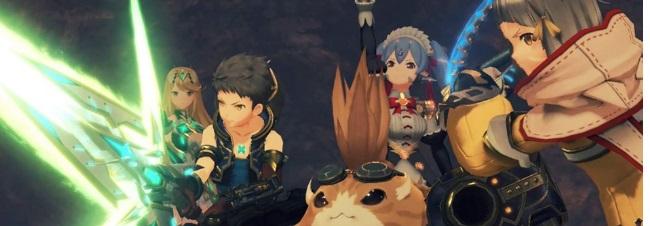
The original Xenoblade Chronicles was my favorite game on the Wii, and potentially for that whole console generation. While I was really excited for Xenoblade Chronicles X and even went out of my way to watch pre-release footage and PAX panels for it, I never really got excited for the direction it was seeming to take and ended up passing on the title entirely.
While pure-gameplay can carry well-crafted open world games (see Zelda later on this list), I couldn’t get myself interested in a Xenoblade title where story and narrative took a backseat to pure world exploration and monster hunting. While I am not even sure if my perception of the extent of narrative absence in Xenoblade X (since I haven’t played it) is even true, I found myself not really caring a great extent once a direct sequel was announced for Nintendo’s new console.
Xenoblade Chronicles 2 is a very interesting game. It excels in all of the places that I expected it to: the soundtrack is phenomenal, the gameplay is full of huge diversified environments, there’s so much customization and agency when it comes to developing your characters and party, and there’s always a reason to revisit old places and finish quests or explore uncharted territories.
However, it comes up short when it comes up to various quality-of-life issues with respect to its mechanics such as no easily accessible/useful map, any sort of list/location of defeated unique enemies, and questionable implementation of field skills that involve constantly shuffling in blades to pass often-arbitrary checkpoints. This isn’t even touching the issues of rng-based blade acquisition and iffy localization decisions.
Despite all of those things however, I can’t really understate how much I enjoyed this game. It was the quintessential JRPG to my expectations, excelling in all the right places to such a strong degree that all of the shortcomings feel like nitpicky footnotes. Cutscenes are dynamic and engaging, optional encounters are challenging and ask the player to prove their mastery of all the systems at play. The way all of the mechanics interlock into a cohesive whole so elegantly with only a few rough edges (mostly with repect to the blade unlocking and related mechanics) is an accomplishment in itself. I don’t think it’s as good as the original title, but definitely a worthy successor that deserves a spot amongst the best games of the year.
5. Guild Wars 2: Path of Fire
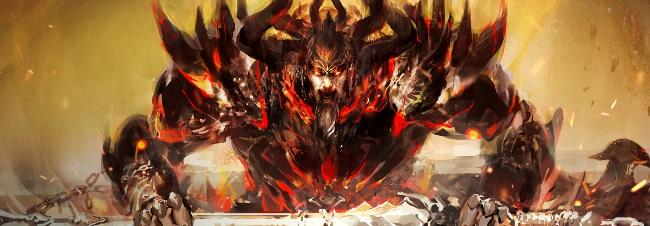
Guild Wars has been something of a guilty pleasure of mine since way back with the original game launched over a decade ago. While I was a pretty committed player to the original game, I found myself even more invested when the sequel (finally) launched in 2012. While some of the original promises listed in the games launch manifesto have turned out to be a bit pie-in-the-sky in terms of reinventing the MMO, I still found that the original game did enough things differently (and without a subscription) that I wanted to give it a try. Glancing over the details for the purposes of this list, Path of Fire is the second expansion for Guild Wars 2, and it’s probably the best the game has been to this point.
That’s not to say that Path of Fire is perfect, it’s actually far from it, but I think it best exemplifies what Guild Wars 2 can bring to the MMO table without completely reinventing the wheel. Without raising the level cap or introducing a new set of classes, it instead offered a new progression route for the existing classes of the game: for instance Rangers can now specialize into a damage-focused class call Soulbeast, which is a far leap from its existing support specialization in Druid. Mesmers can become potent mirages at the trade off of not being able to be the boon-king brought by being a Chronomancer, its original Elite Specialization.
Path of Fire’s greatest strength however is that it managed not to interrupt the content-update schedule of the game. Guild Wars 2’s first expansion Heart of Thorns was preceded and followed by lengthy scarcities of regular updates as all focus was put into the expansion, so independently of the expansions quality on its own merits, it served as a low point in the game’s history due to these droughts. Path of Fire was released without such interruptions, which is an accomplishment in its own right.
By being able to create a full sized expansion that deviated significantly from the expected “introduce a new dragon, kill new dragon”, Path of Fire was definitely a rebound for the game and I’m excited to see where the current story leads from here.
4. Wolfenstein II: The New Colossus
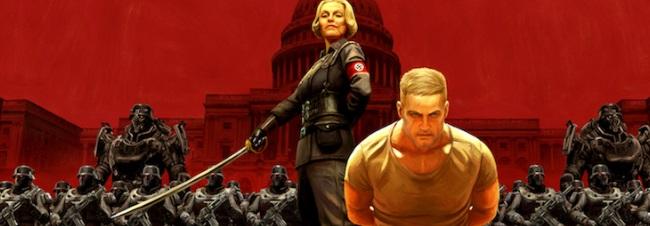
When I played Wolfenstein: The New Order in 2014, I was incredibly surprised. I usually find myself playing single player first person shooters as a sort of “low-investment” game. I’m expecting to be given a variety of set-piece environments to explore and a roster of enemies to shoot an array of bullets at. As some point I expect to shoot something with a shield, mow down a bunch of targets in a hectic escape sequence, or blow something up in a cinematic fashion.
The New Order instead gave me a heartful story full of memorable characters in the most obnoxiously kitsch setting ever, a balancing act worthy of award in itself. I had no idea how that would be followed up on.
Luckily, The New Colossus maintains this balancing act near flawlessly: The New Order’s strength found in its characters and cinematography are still present in its sequel without titling too far into the grimdark or into senseless silliness. Incidental dialogue between characters is almost as superbly acted as the incredibly well-directed cutscenes. Smart improvements are made to the combat as well, such as being able to pick up health and armor upgrades simply by walking over the items rather that having to necessarily press a pickup button.
I will state that I feel like the added linearity of the levels, often hiding a commander unit as the very back of a hallway without a lot of entrances, along with the same-y nature of the various metallic bunkers and hideouts that you visit throughout the game are legitimate steps back that detracted from my enjoyment of the game. If I had played Wolfenstein II with the same sort of mentality going into The New Order, these weaknesses may have weighed on my a little more heavily, but since the game still managed to excel in the areas I expected it to, I think I was maybe a bit easier on it than I could have been as the 2nd title in an expect trilogy.
Hopefully if Machine Games can follow up on the title in a few years, they can tweak the level design back to the slightly more open environments of The New Order and cap out this most unexpected reboot with a very loud bang.
3. The Legend of Heroes: Trails in the Sky the 3rd
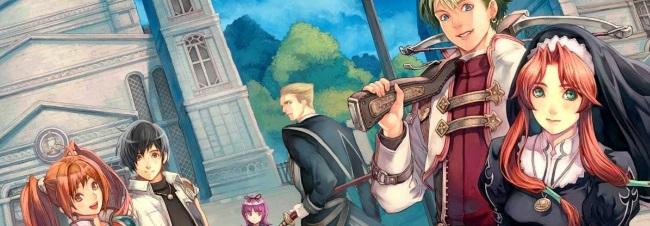
Effectively a Section B on my list following from Trails of Cold Steel, Trails in the Sky the 3rd is a similarly difficult game to rank. I was not really expecting to enjoy this game to the extent that I did: I did not truly enjoy Trails in the Sky FC and SC and I didn’t expect the unique gameplay loop of Trails 3rd to carry the game on its own. Despite going in with this somewhat-cynical mindset, I found myself enjoying the title more than I ever expected to.
Trails in the Sky the 3rd is my favorite Trails game to date. I believe it was able to cement this position for me because of two key reasons. The first key reason is that the game is relatively unshackled from the moment you boot it up, mechanics wise. By this I mean that characters are introduced to the party quickly, all of the previous mechanics and skills from the earlier two entries in the game are already in place, and you don’t have to invest time introducing every character and slowly introducing every mechanic: slowly casting a low level magic spell and using a low level set of abilities while waiting for better ones to unlock.
Having a large number of playable characters so quickly one of the greatest aspects of the game, I feel. While the game sometimes limits which characters must go to which places, the player is given a ton of freedom about who they use, and thusly, can play the game in the manner that most fits their sensibilities. I for instance like crafting a well-balanced party that focuses on being able to dish out damage, both buff the party and debuff the enemy groups, and heal when necessary. Another person might just want to grab the four strongest characters without regard for defense or support, and another might just play with their favorites. It’s a far cry for a series that often railroads the player to just use whoever is story relevant at any particular time.
Secondly, the game doesn’t have to introduce the majority of its characters through the methodical exposition of the previous games: these characters have already had a hundred hours detailing their motives, beliefs, and characteristics and can for the most part slot them right into the party without a lot of negative consequence. Of course, the title character of Kevin and the new character Ries get the necessary expanded story-focus, but Trails 3rd can do this without diverting from this focus and the game feels a lot more brisk for it.
However, this all requires that the player invest time into the first two titles of the trilogy, which is a large ask for any person. Someone going into Trails 3rd without this investment won’t have the necessary information at hand to have the same sort of investment. And I don’t just mean knowing what happened in the previous titles, sometimes I feel that too much focus is giving to the event-to-event chronology of the series: who meets what and what happens when and in what order.
While important, I find that the crucial element at play which playing through the trilogy in order is introducing the character inspirations, motivations, and how they interact with each other and knowing how they can expect to act in any situation. And then Trails 3rd uses the Door mechanic to explore these options even further. The exact chronology of the events doesn’t matter as much.
Despite the necessary completion of FC and SC in order to enjoy Trails in the Sky the 3rd to this extent, I still feel that it is one of my favorite games of the year.
2. The Legend of Zelda: Breath of the Wild
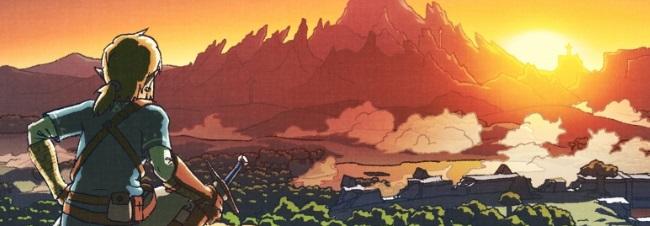
I’ve been a Zelda fan since Ocarina of Time. I bought a Switch just for Breath of the Wild. My opinion is, admittedly, pretty biased. However, I had grown comfortable with the traditional console Zelda template and wasn’t sure how I would take such of departure from the tried and true. I didn’t take very well to Skyward Sword, but I thought that was an issue with the execution on the template, not the design itself. I wasn’t convinced that Zelda needed to have such a drastic change of direction.
However, I was very glad that someone high up at Nintendo wasn’t as conservative as I was regarding Breath of the Wild’s design philosophy. Upon receiving the game as the only game for my new Nintendo console, I dropped a few dozen hours into the game before I even knew it. I see the common complaints about lack of overworld music, a dearth of interesting objectives to fill the map with, and limited combat variety, but I found myself not really phased by these statements that could potentially be stated as objectively true.
While I don’t have a great argument against these claims – I agree with most of them – I found myself more impressed by the smart ingenuity of the game than I was disappointed as those deficiencies. The way the game approaches open-world design in a different, nuanced way is incredibly refreshing. I think that this is most concisely illustrated in the way Breath of the Wild handles its map.
Sure, most important landmarks are shown on the map and quests will give you a little yellow dot, but locations of treasure, enemies, and caves are almost always left unmarked. Certain locations will label themselves once you’ve visited them, but only the general topography is unveiled by visiting the various towers dotted throughout the land.
The player is instead given a large selection of stickers to use to mark the map how they want, and I think this is genius. I personally used a certain sticker type to mark out the locations of Talus, Lynel, Hinox, and Molduga enemy types, and another to mark out Dragon spawn points. And then the game gave me a handful of colored beacons to use to mark out immediate objectives: shrines I wanted to work my way to and towers I noted in the distance.
The twist that this has on the idea of an “icon-filled world map” I don’t think can be understated, even if it’s minor when boiled down to its core. I think this take on the traditional open world mechanics that we’ve come to expect from these sorts of game encapsulates what Nintendo can bring to the table: they might not put out the most technically impressive software in their library but the inventiveness is something I come to appreciate more and more as I get older. Breath of the Wild is inventive in so many ways and is worthy of all of the accolades that have been thrown its way so far.
1. Divinity: Original Sin II

Original Sin II takes on a potentially hackneyed tale about the ascent to godhood in a world on the brink of ruin and successfully manages to mix in equal parts whimsy, cruelty, passion, and grim seriousness to craft a story that clicks in every way. Nearly every aspect of Original Sin II is impressively crafted, from its well-built world to its intricate quest design and elaborately complex combat system.
Smart subtractions are trimmed such as a refined paring of the original game’s crafting system and smart additions are made, such as the armor mechanic alongside a physical/magical split that make every combat encounter feel even more bespoke. It all weaves together so wonderfully.
I constantly found myself staying up far later than I anticipated when playing through Original Sin II. We’ve all heard of “one more turn syndrome”, the idea of repeatedly playing through an additional round in Civilization game before finally hitting the sack, and that’s the most apt comparison I can find to make for what experience with Divinity. Only instead of iterative rounds, it would be finishing one more dungeon, finding the lead for one more quest, learning how to craft one more spell, or overcoming one more difficult fight. Everything about Original Sin is so densely packed from its quest design to character depth that it’s never easy to find a clear breaking point. It’s a testament to the cohesiveness of the world that Larian’s been able to build.
Without reiterating every single point that I covered in my chance to review the game for this site, the takeaway is that Original Sin II is one of the best games of the genre, and anyone with any strong interest in RPGs owes it to themselves to at least try it out. Don’t let the potentially rote western-fantasy exterior mislead you; Original Sin II is a unique tale and is unlike every other game out there -- well, it’s like Original Sin I, but even better.